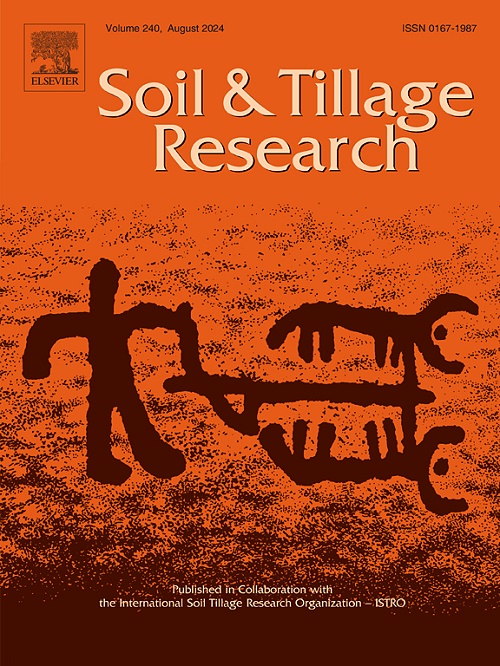Mechanisms of cover crop-derived carbon sequestration in winter wheat fields: Insights from 13C labeling
IF 6.1
1区 农林科学
Q1 SOIL SCIENCE
引用次数: 0
Abstract
Cover cropping is an effective agricultural management strategy for enhancing soil organic carbon (SOC) sequestration and mitigating climate change. However, the contribution of different cover crop species to individual carbon (C) fractions in soil remains unclear. An in-situ decomposition experiment using 13C-labeled residues of soybean (SB) or sudangrass (SG), along with a control with no residue (CK), was designed to explore the dynamics of residue decomposition, distribution of cover crop-derived C into aggregate-protected and -unprotected C, and the sequestration mechanisms of these fractions. The aggregate-protected C included intra-aggregate particulate organic C (iPOC) and mineral-associated organic C (MAOC), and aggregate-unprotected C included coarse particulate organic C (cPOC) and free fine particulate organic C (fPOC). The amount and rate of cover crop residue C mineralization were greater in SB than in SG across all wheat-growing stages. The SB increased large macroaggregate (>2 mm) compared to SG during the early wheat growth stages. The aggregate-protected C fractions were greater in SB and SG than CK at the pre-sowing, tillering, and heading stages. The 13C labeling indicated that C sequestration occurred primarily as aggregate-protected C, predominantly as MAOC. The recovery efficiencies of cover crop-derived C into soil C fractions fell below 0 % at green-up and jointing stages. At maturity stage, the cumulative C recovery rate of cover crop-derived C into SOC was greater in SB (16.3 %) than in SG (8.76 %). Correlation analysis indicated that cover cropping promoted SOC sequestration primarily and directly by increasing the aggregate-protected C. Structural equation model analysis suggested that SG sequestered C into soils primarily by increasing cPOC and iPOC, In contrast, SB sequestered C by increasing cPOC, iPOC, and MAOC. This study elucidates the dynamic effects of cover cropping on soil C during wheat growth and the distinct C sequestration mechanisms in legume and non-legume systems.
求助全文
约1分钟内获得全文
求助全文
来源期刊

Soil & Tillage Research
农林科学-土壤科学
CiteScore
13.00
自引率
6.20%
发文量
266
审稿时长
5 months
期刊介绍:
Soil & Tillage Research examines the physical, chemical and biological changes in the soil caused by tillage and field traffic. Manuscripts will be considered on aspects of soil science, physics, technology, mechanization and applied engineering for a sustainable balance among productivity, environmental quality and profitability. The following are examples of suitable topics within the scope of the journal of Soil and Tillage Research:
The agricultural and biosystems engineering associated with tillage (including no-tillage, reduced-tillage and direct drilling), irrigation and drainage, crops and crop rotations, fertilization, rehabilitation of mine spoils and processes used to modify soils. Soil change effects on establishment and yield of crops, growth of plants and roots, structure and erosion of soil, cycling of carbon and nutrients, greenhouse gas emissions, leaching, runoff and other processes that affect environmental quality. Characterization or modeling of tillage and field traffic responses, soil, climate, or topographic effects, soil deformation processes, tillage tools, traction devices, energy requirements, economics, surface and subsurface water quality effects, tillage effects on weed, pest and disease control, and their interactions.
 求助内容:
求助内容: 应助结果提醒方式:
应助结果提醒方式:


